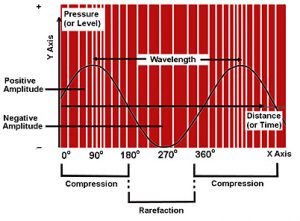Why should one bother trying to understand basic acoustics? The most simple (and correct) answer is that study of basic concepts enables one to sort through the truth, semi-truth, myths and flat-out errors that pervade the pro audio industry.
The fundamentals of acoustics (and physics) do not change, although some “experts” try to prove otherwise. New equipment, toys and theories come and go, but the basic building blocks of sound and its related concepts do not.
If university level training in audio or acoustics is not your calling, don’t despair. There are many excellent seminars sponsored by industry, manufacturer, trade, and commercial organizations that can further your knowledge.
And did I mention books? There are numerous excellent texts available that cover almost every topic imaginable in acoustics, sound and systems. Do some web surfing—you’re certain to come upon valuable and useful educational resources.
Further, on-line training courses are abundant, and some are quite good at covering the basics. Intensive educational seminars, such as those provided by SynAudCon, can be invaluable if you have a few days each year to devote to this worthwhile pursuit.
In the meantime, let’s start with a look at some of the bedrock concepts that can put you on the path to higher understanding.
Passage Of Pressure
Sound is related to the sensation of hearing and the generation of vibrations that results in a physical disturbance evoking the sensation of hearing. Briefly, sound is the passage of pressure changes through an elastic medium via wave propagation caused by vibrational forces acting on that medium.
Acoustics is the study of sound transmission through fluid and solid media. Noise is unwanted sound. But as some have said, one person’s sound is another’s noise.
Sound can be described and quantified in a variety of ways based on wave motion, pressure, particle velocity, transmission medium density, wavelength, and frequency. A medium is necessary to transmit sound.
Sound can travel quite readily through solids, liquids, and gasses. The transmission medium has an affect on the propagation of sound, particularly its characteristic velocity.
Sound originates from a source (vibrating body), propagates through a medium (solid, liquid or gas), and is picked up by a receiver (listener or microphone). This is commonly called the source-path-receiver model for sound propagation.
The simplest way to depict sound uses the sine wave shown in the Figure 1. In reality, the sine wave representation is an oversimplification of most sound sources, but does provide a good starting point to visualize some of the salient physical characteristics.

In Figure 1, the X-axis represents time or distance and the Y-axis can represent pressure, level, energy, or transmission medium density. Amplitude regions above the zero axis are positive (compression); regions below are negative (rarefaction). The figure shows one sine wave, characteristic of only one frequency, which is not that common an occurrence. Most sound sources we encounter (music, speech, and everyday noise) comprise many frequencies with different amplitudes.
Sound is most commonly viewed as a change in pressure relative to atmospheric pressure. As a sound source vibrates it disturbs the particles of the medium resulting in regions of compression (higher pressure) and rarefaction (lower pressure). The higher pressure regions result in an increase above atmospheric pressure.
Conversely, the lower pressure regions result in a decrease below atmospheric pressure. These pressure changes are surprisingly small: normal atmospheric pressure is around 100,000 pascals (Pa) (14.7 lb/in2) and a 100 dB sound pressure level is only 2.8 Pa (0.0004 lb/in2 )! (Note that the pascal is the metric unit of pressure.)
Density Of The Medium
Sound has a characteristic propagation velocity. In air at “normal” room temperatures, sound travels approximately 1,128 ft/s (343 m/s).
Using velocity units most of us are familiar with, sound travels approximately 770 km/hr. The propagation velocity increases as the density of the medium increases.
For example, in water, the velocity of sound is 4,856 ft/s (1,480 m/s) and in steel is 16,570 ft/s (5,050 m/s). The velocity of sound is temperature dependent.
For each degree increase in temperature, the velocity increases about 1.1 ft/s (0.6 m/s) compared to normal room temperature. In air, the velocity increases approximately 0.2 percent for 100 percent humidity compared to 50 percent relative humidity conditions.
Thus, humidity can generally be ignored when dealing with the velocity of sound. For purposes of our discussions here, we will concentrate on sound propagation in air.
The frequency is the number of times per second an event repeats itself. For sound the event will be a vibration from some source. The units of frequency are hertz (Hz), or simply cycles. Lower frequency sound will repeat the cycle less often than higher frequency sound.
The cycle can also be represented in terms of the number of degrees, with 360 degrees (2π) representing one complete cycle. The period is the time that it takes to complete one cycle.
Rules of Thumb
Try to remember the following, or create “cheat sheet” for your iPhone or other handheld device
—Sound travels approximately 1 foot in 1 millisecond.
—The wavelength at 1,000 Hz is approximately 1 foot. Halving the frequency (500 Hz) will double the wavelength to approximately 2 feet. Doubling the frequency (2,000 Hz) will halve the wavelength to approximately 0.5 foot.
—Low frequency sound has a long wavelength and vice versa.















